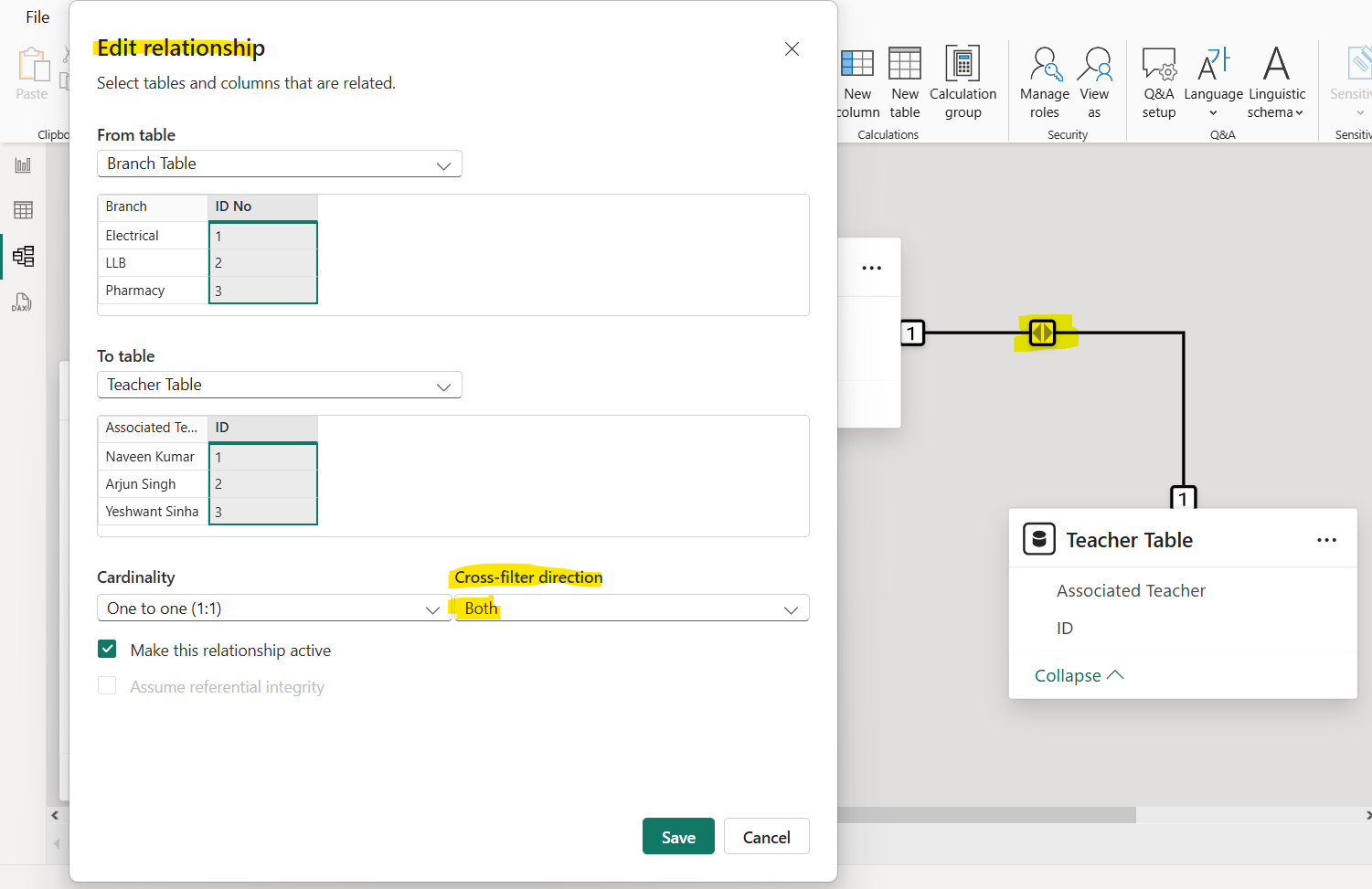Bidirectional Filtering in Power BI
In this exercise, we will learn about the bidirectional filtering in Power BI.
We can see the following tables in the data model and their relationships. Between the “Branch Table” and the “Teacher Table” we have the relationship between the ID No and ID column respectively. The arrow is pointed out in both the directions, it means the “Branch Table” filter the “Teacher Table” and “Teacher Table” filters the “Branch Table”.
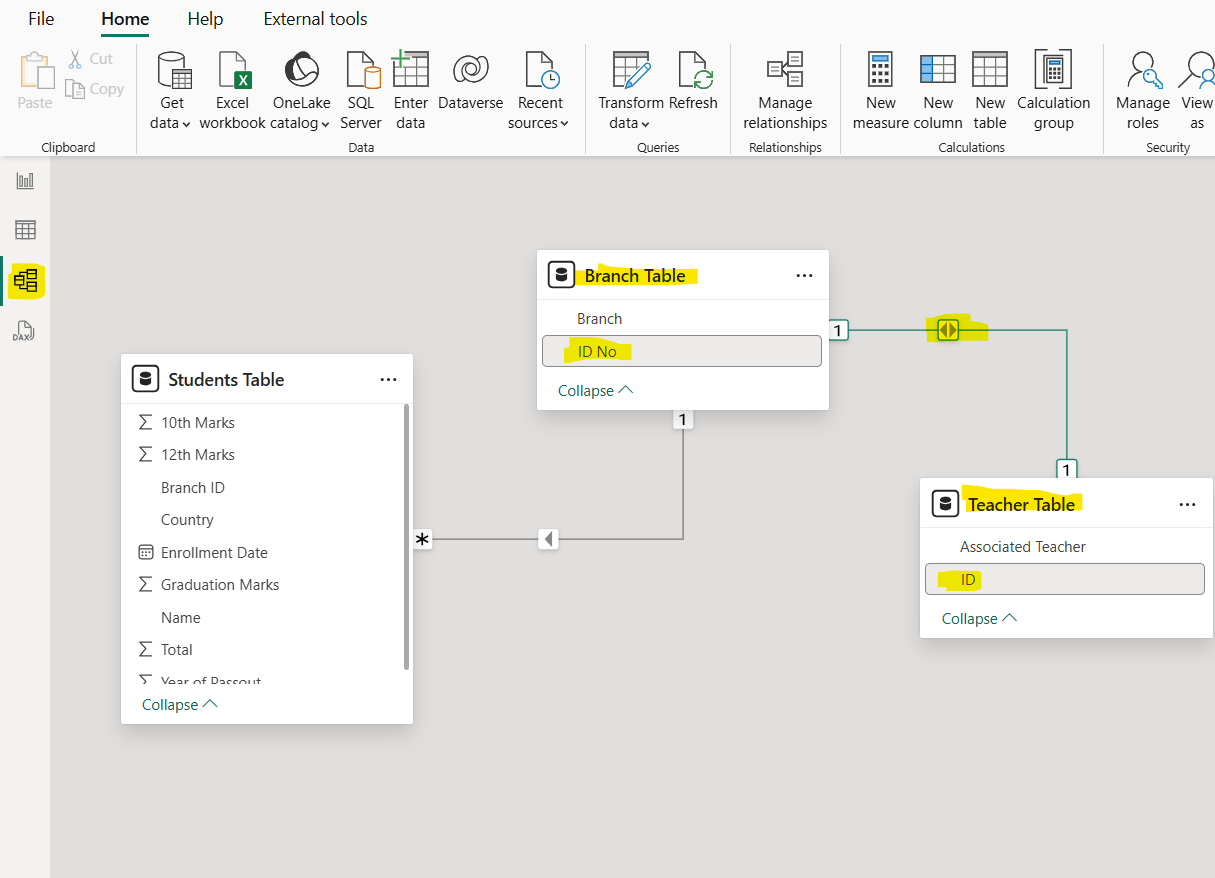
Let’s add a table visual and add the Branch column of the “Branch Table”.
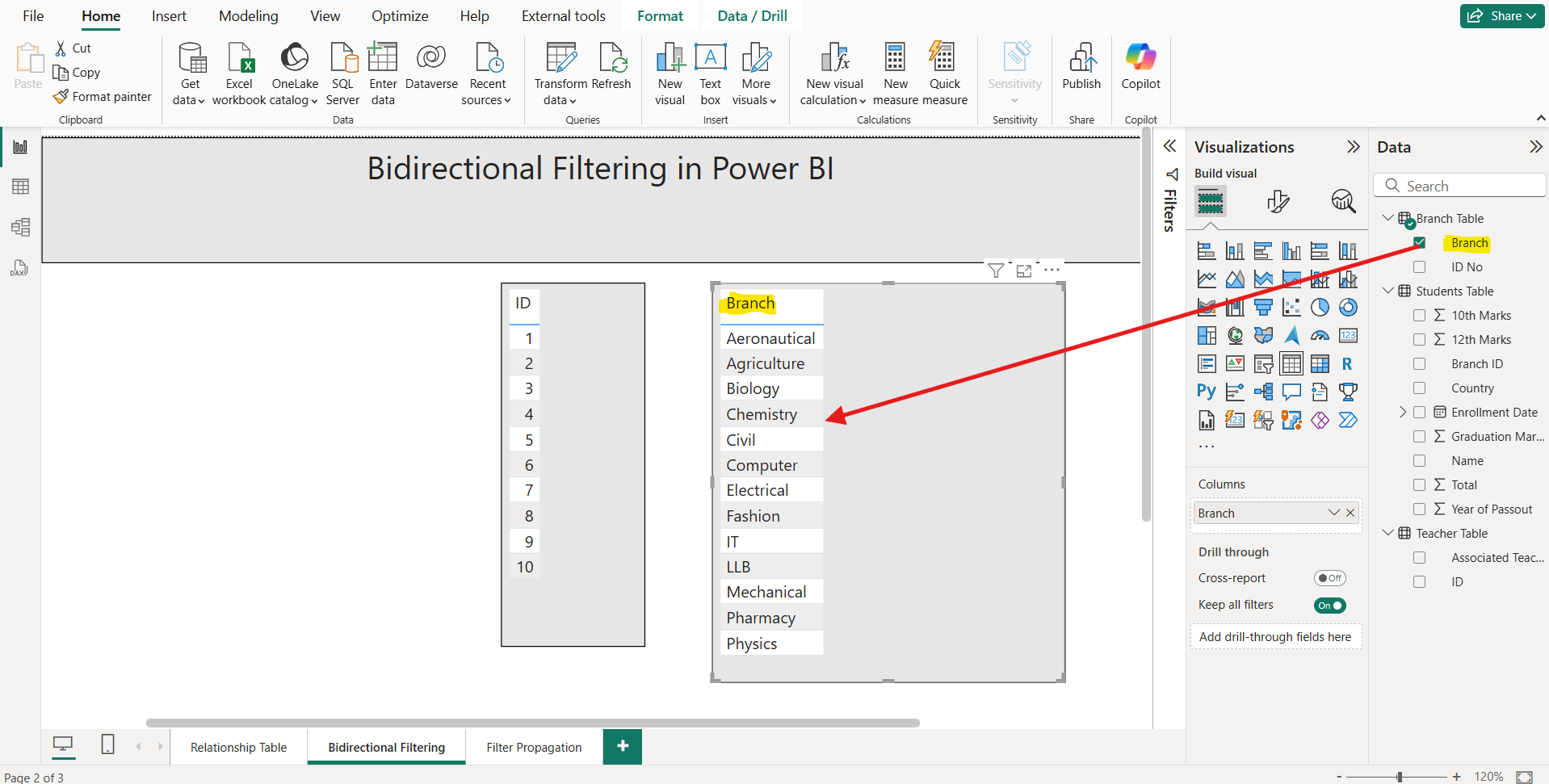
Also add another table visual and add the ID column from the “Teacher Table” visual.
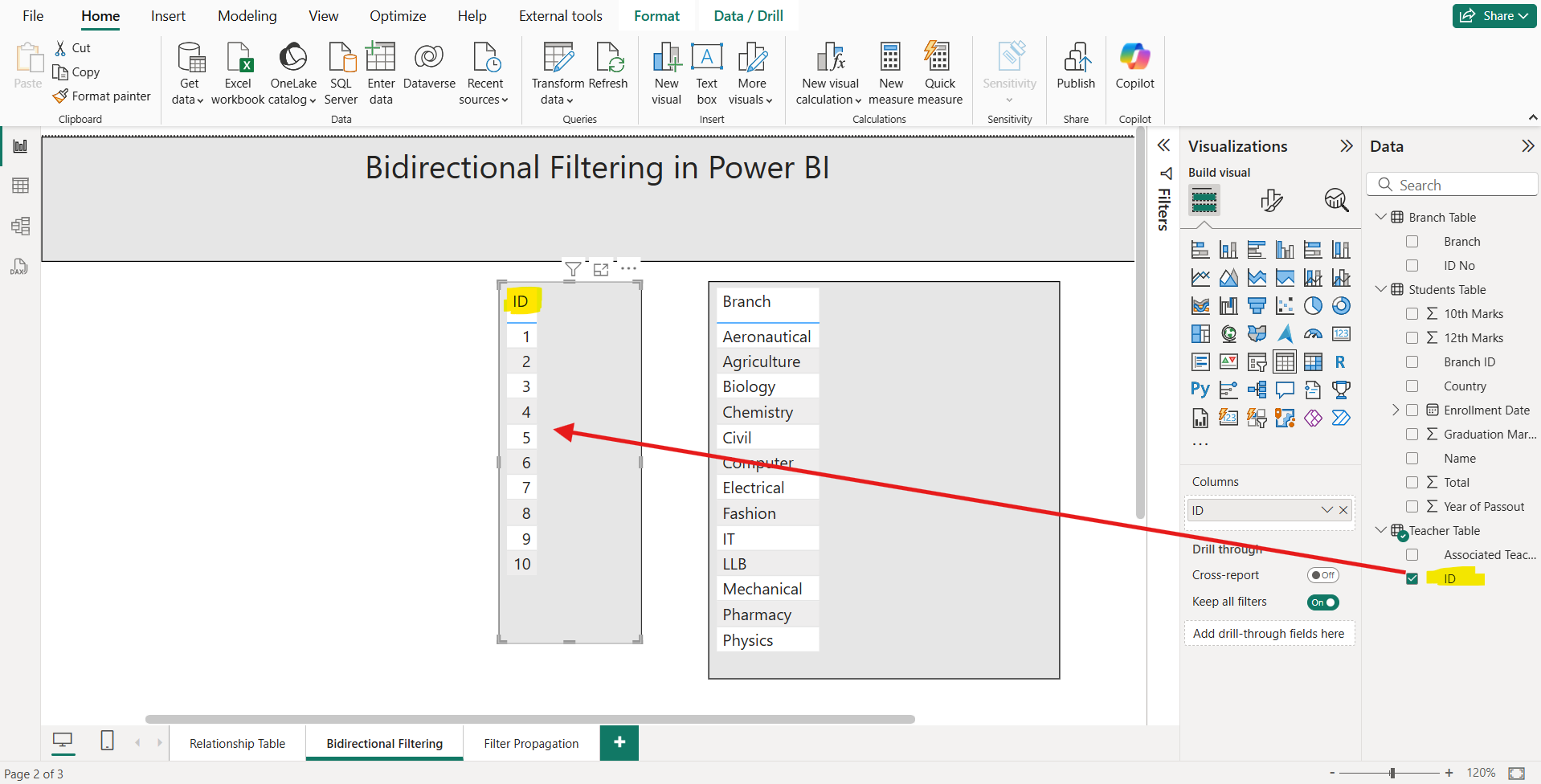
Let’s click on the Branch column value in the table visual, we see the corresponding ID from the other table visual is filtered as shown in the image below:
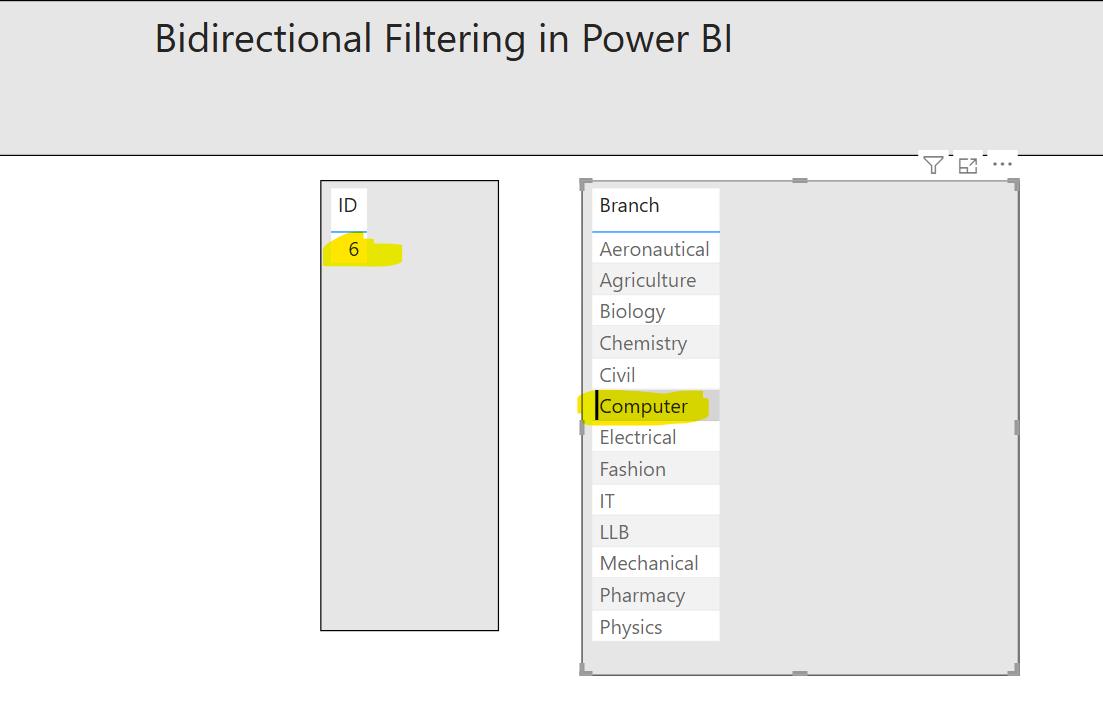
Let’s check the reverse process, now select the ID column value, then let’s see the Branch column that how it is filtered.
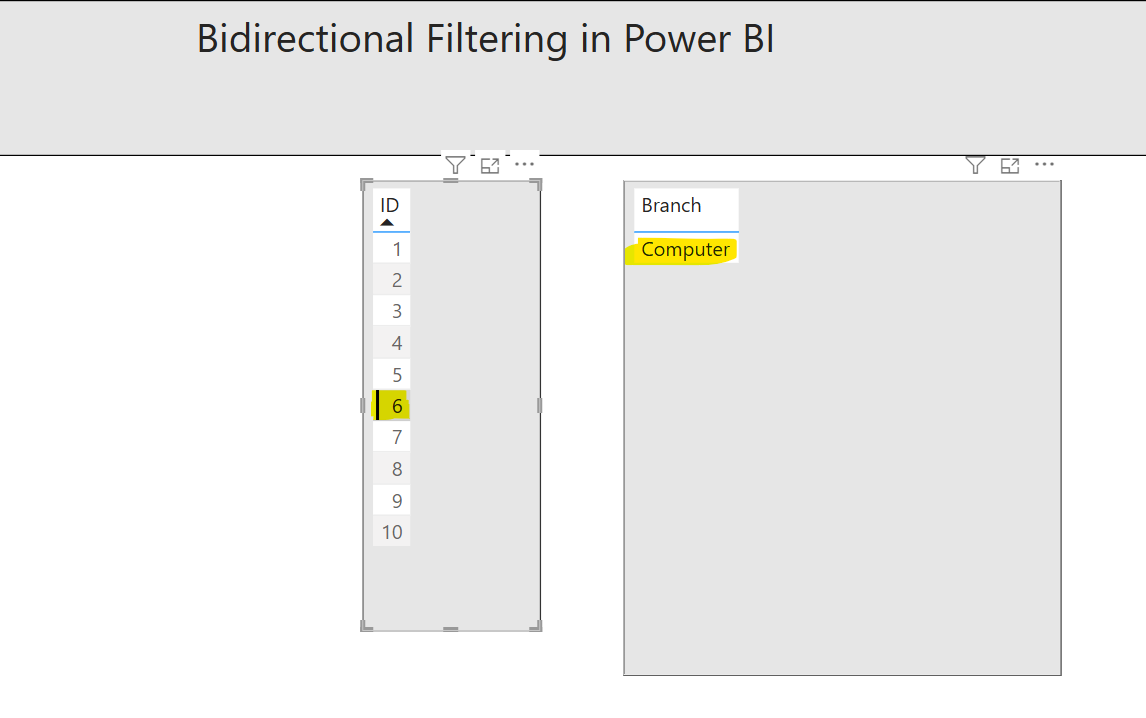
As in the “Students Table” and “Branch Table”, the arrow direction for relationship is from the Branch Table to the Students Table. So, therefore the Branch Table filters the “Students Table” but “Students Table” does not filter the “Branch Table”.
Let’s check this, on the report page:
Case 1: Select the Branch Table value. We can see the Student Table is filtered correctly as shown in the image below:
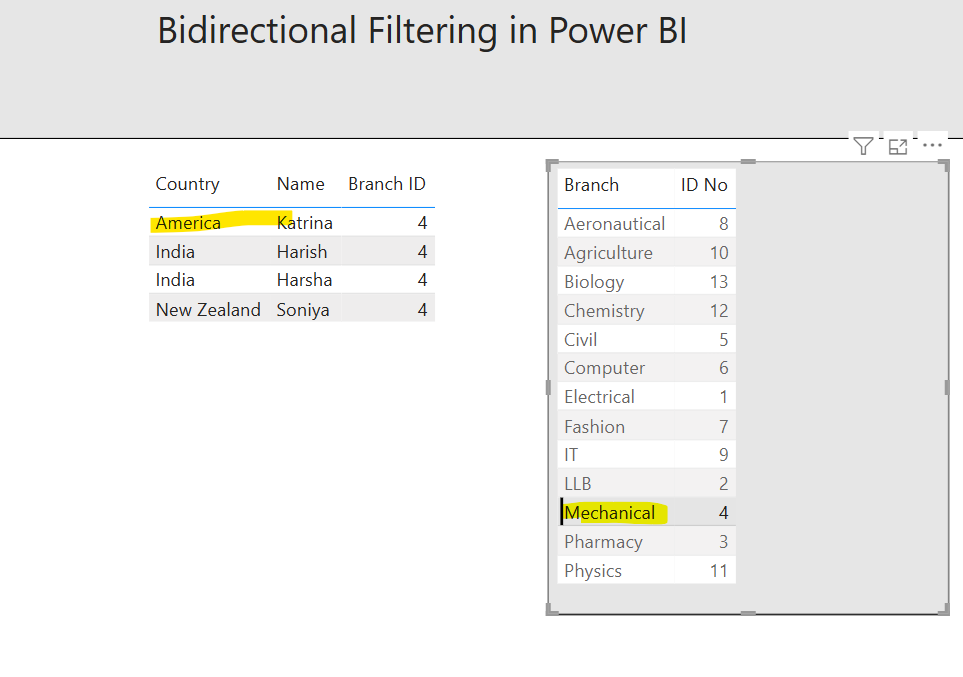
Case 2: Select the Students Table value. We can see the Branch Table is not filtered at all as shown in the image below:
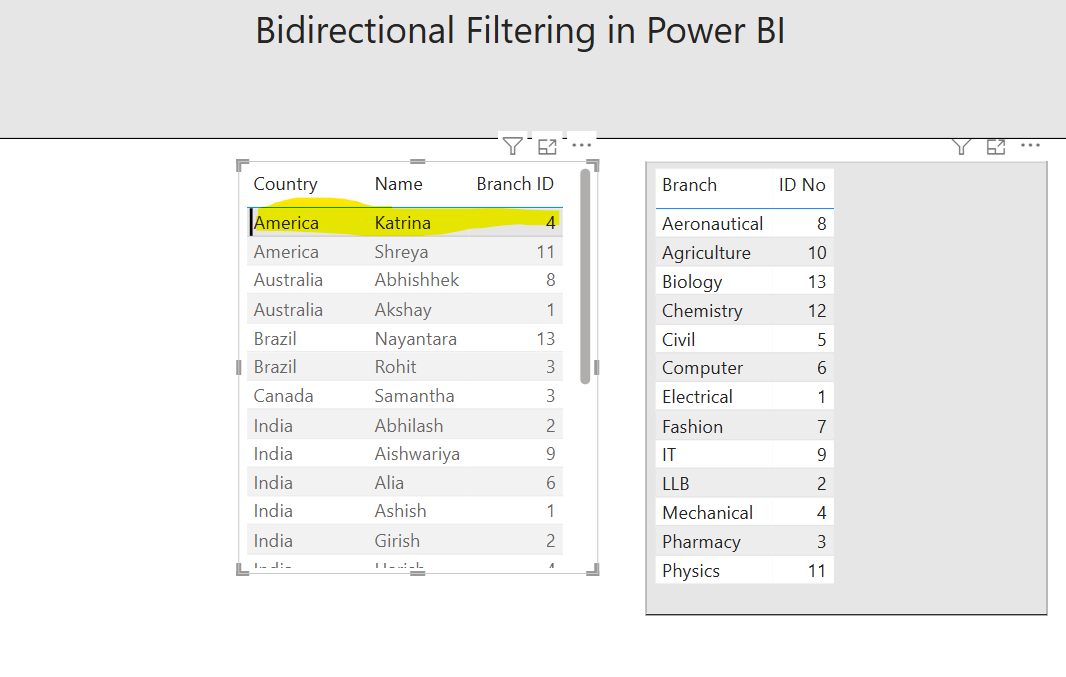
In the “Edit relationship” dialog box, we can see the Cross-filter direction to Both.
